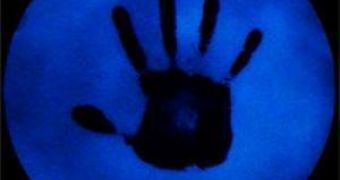Most explosive detection methods require scientists to run them. The new method developed at the University of California San Diego however is very intuitive, meaning it's pretty much fool-proof, portable and able to detect traces of nitrogen-based explosives in very short amounts of time. Samples can be tested with the help of films that become fluorescent while lit with ultraviolet light. Alternatively, the film is able to distinguish between explosive chemical classes.
The explosive detection film is coated with a special fluorescent polymer created by chemistry and biochemistry professor William Trogler and graduate student Jason Sanchez from the University of California San Diego. "It's a very intuitive detection method that doesn't require a scientist to run", Trogler explained.
When subjected to radiation in the ultraviolet spectrum the fluorescent polymer starts emitting blue light, but when it comes into contact with nitrogen-based explosives, the polymer becomes soaked up in electrons and no longer glows when under ultraviolet light.
The film can be directly sprayed on a specific surface to reveal even minute amounts of explosive chemicals. According to its developers, a single layer of sprayed polymer weighing one thousandth of a gram is able to reveal the presence of explosive chemicals in amounts as little as a couple of trillionths of a gram. This is about 1,000 times less than the quantity of explosive left behind by handling operations, on fingers and other contact surfaces.
An accurate detection can be conducted in about 30 seconds - the time required for the solvents to become dry - while long exposure to ultraviolet light - one, two minutes - alters the nitrate esters inside the explosive, making them glow green in order to determine the class of chemicals used to manufacture it. TNT for example, remains black when subjected to ultraviolet light in the presence of the newly developed film.

 14 DAY TRIAL //
14 DAY TRIAL //